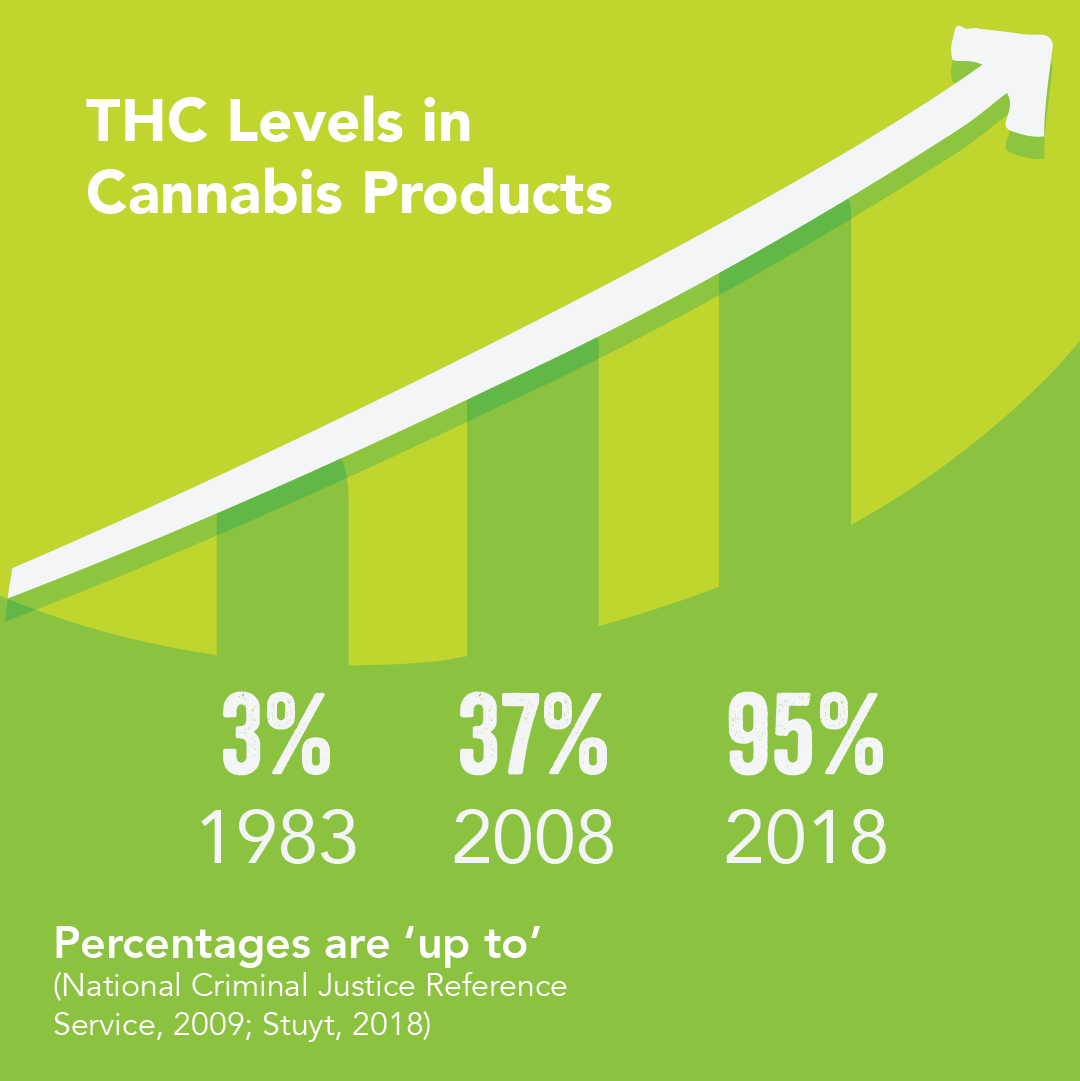
The high-concentration marijuana products of today contain much higher levels of the intoxicating ingredient tetrahydrocannabinol, commonly known as THC, than products of the past.
To learn more about this trend, the Colorado General Assembly directed the Colorado School of Public Health to review the scientific research on the prevalence and health effects of high-concentration cannabis use, to make recommendations to the legislature to guide future policy making, and to create a public health awareness campaign.
The “Tea on THC” campaign arms Coloradans with facts and real-world testimonials to raise awareness, encourage dialogue, and provide alternative coping strategies for substance use.
Today’s marijuana plants contain more THC than the pot of days gone by. Also, new high-concentration products (e.g., oil, shatter, dab, and edibles) deliver much more of the psychoactive ingredient THC than smokable weed of the past. The speed and intensity of the high they produce are substantially different from what marijuana was capable of doing even a decade ago.

To better understand the landscape, the school initiated the Colorado Cannabis Education, Research and Policy Project, which assessed more than 66,000 published studies. In 2023, it released the Scoping Review on Health Effects of High-Concentration Cannabis Products report. While only a few hundred of the studies were deemed high enough quality to produce reliable answers, the study did identify consistent trends throughout the research:

Review
Review the research on the physical and mental health effects of high-concentration cannabis.

Recommend
Establish a scientific review council to recommend evidence-based regulatory changes and propose funding of additional research to the Colorado General Assembly.

Educate
Create a public education campaign highlighting the effect of high-concentration cannabis with an emphasis on the developing brain and mental health.
For any questions, please email info@teaonthc.org
Powered by Colorado School of Public Health
Desarrollado por la Escuela de Salud Pública de Colorado